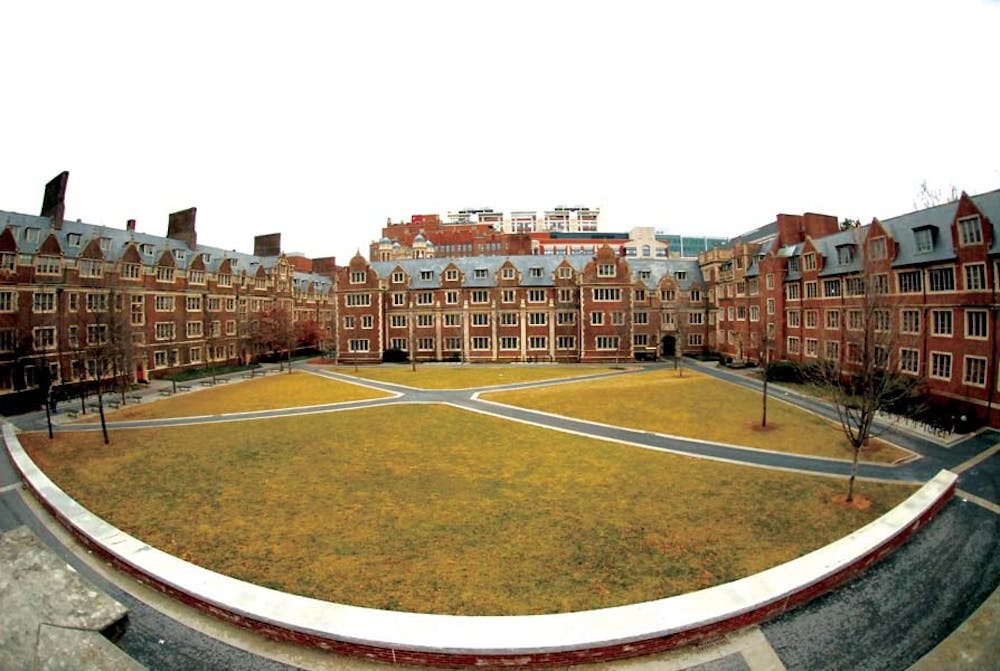
Perhaps a decade from now, students will be able to see black box theaters in their dorms or play with Legos in one of their common rooms.
These are among the possibilities being considered as part of the development of a “precinct system” in the college houses. This system, according to representatives from College Houses and Academic Services and the Business Services Division, would group different college houses together into precincts — a unit of college houses grouped together geographically. One precinct could be the high rises, he said, and another could be Hill, Kings Court English and the new college house to be developed on Hill Field by 2016.
“What the precinct discussion is about is: Are there amenities that don’t need to be offered at the building level but can be offered at the precinct level?” Director of Business Services John Eckman said. “If there are certain amenities only offered at the precinct level, it allows us to pull that space together in one building and make that amenity bigger.”
Some of these amenities are game rooms, work out facilities, package rooms and theaters. With the precinct system, the small fitness centers currently in place in many of the college houses could be replaced by one larger fitness center shared by all of the residences in the precinct.
Some of the more radical suggestions for the usage of public space that have been thrown around are messy art spaces, crew rowing machines in the college houses and tinker rooms. Tinker rooms — currently being designed for Stanford University, Eckman said — promote thinking by containing tools like Legos that inspire creativity.
He added that they may begin working with an architect in six months to further develop the concept of the precinct system.
The system is primarily concerned with the intentional use of space. “In the high rises for example, the grand pianos that the students are taught on for their music lessons are in the rooftop lounges, so people can’t use those lounges when there are lessons going on,” Executive Director of CHAS Martin Redman said. “Maybe there’s a way in the precinct concept to put those lessons in a one-location area to free up the rooftop lounge.”
Decisions related to the precinct system could potentially affect the minor renovations to college houses over the summer of 2014, like the scheduled update to the Class of ’38 lounge in Kings Court English.
“It’s very easy to have a lounge with chairs in it,” Eckman said. “But should it be a study room or a library or something else? We want to give these places identity.”
With the development of the new college house and the impending renovations to Hill College House, this is an ideal time to consider other changes to the college house system, Barbara Lea-Kruger, director of communications at Business Services, said.
These changes are all related to improving and encouraging on-campus living.
The college houses are funded by a “college house fee,” a $110 charge each semester to those living on campus. The fee pays for residential programs and other house activities.
“Without full occupancy, it impacts the budget of the college houses, so they may not be able to do everything they want to do,” Redman said. “But we budget conservatively, so we don’t expect to see 100 percent of beds filled.”
Including Sansom East and West, 58 percent of undergraduates live on campus. Broken down by class, 99 percent of freshmen, 63 percent of sophomores, 41 percent of juniors and 27 percent of seniors live on campus. The total number of bed spaces in the college houses, which does not include Sansom, is 5,362. There are currently only 125 empty beds in the system, so the college houses are about 97 percent full.

Both Eckman and Redman emphasized that the precinct system — as well as most of the discussions about changes to the college house system — is currently just a concept being considered and that their departments are very open to student opinion before making any decisions.
The Residential Advisory Board, which has representatives from all of the college houses, is currently engaged in the conversation about the precinct system. During the development of this idea and others, Redman said, “We will have the appropriate governing body and collection of students working with us.”
“Right now, these are all just ideas,” Eckman said. “What we definitely know is that we want our spaces to improve the experiences of the people living in their college houses.”
The Daily Pennsylvanian is an independent, student-run newspaper. Please consider making a donation to support the coverage that shapes the University. Your generosity ensures a future of strong journalism at Penn.
DonatePlease note All comments are eligible for publication in The Daily Pennsylvanian.





